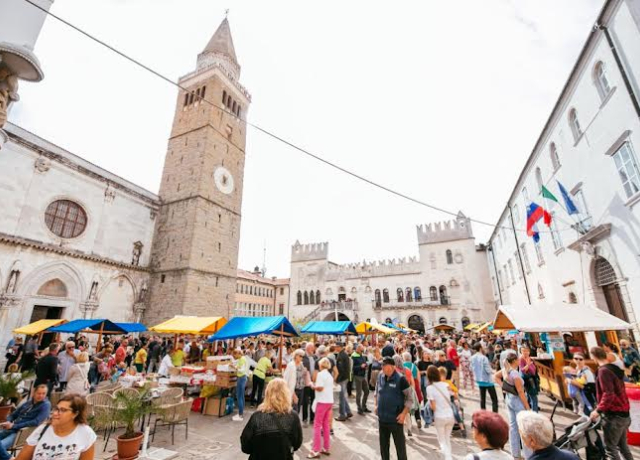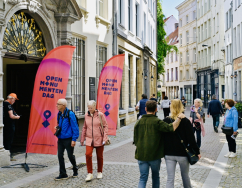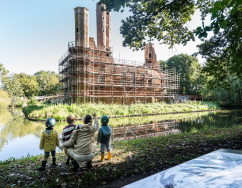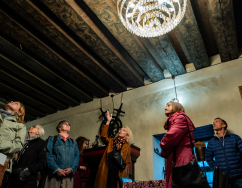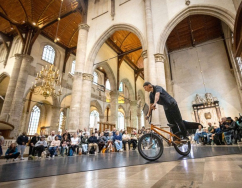European Heritage Days Article:
How Architectural Heritage Can Encourage People to Explore Their Own Towns
European Heritage Days Article:
How Architectural Heritage Can Encourage People to Explore Their Own Towns
Photo: Clock Tower in Koper - Time is a Moving Image of Eternity, EHD Story, Slovenia (credit, Samuel and Amela Kukovičič)
From looking upwards at skylines to going underground to explore the structures beneath our feet, and from focussing on small architectural details to experiencing whole areas as they appeared in the past, this article looks at how this year’s Architectural Heritage theme can be used to encourage people to engage with their built environment in different ways and explore places both new and familiar.
Encourage appreciation of specific architectural features and smaller details
A walking tour or architectural treasure hunt with a focus on specific features of buildings could be used to highlight the variety of interesting examples in a town. For example, looking at different styles of windows and doors outside, or fireplaces and staircases inside could explore the craftsmanship involved or explain the history and development of design. Another idea could be to create a game for children based on small details of buildings such as animals or motifs shown in carvings, decorative tiles or stained glass to encourage them to explore and look more closely. Other events might include photography masterclasses with professional photographers or universities to help participants capture architectural details, while a photographic competition could be used to curate a special exhibition to highlight these to the wider public. More inspiration for how to focus on specific architectural features can be found in the Time is a Moving Image of Eternity European Heritage Days Story which has been raising understanding and appreciation of the history, manufacture and conservation of clock towers in Slovenia.
Discover new places by exploring beyond the usual areas
Walking tours often focus on the public buildings found in the centre of a town or city, but this year’s architectural heritage theme encourages appreciation of lesser-known places too. Suburban areas are one example which are sometimes overlooked, but walking tours of these streets can speak to broader social histories and showcase the architecture of the age in which they were developed. As well as residential buildings, other sites can also be explored through the theme such as guided visits to cemeteries to explain the design of graves and monuments which often replicate architectural styles on a smaller scale. These tours could also bring to light the background of memorials such The Restoration of Bellona, a European Heritage Days Story from Malta which documents the research and intended restoration of a funerary statue of the Roman Goddess of War.
Look from a different perspective by learning from others
The ways in which buildings hold meanings for people is an important aspect of this year’s theme. Architectural Heritage events are an opportunity to work with communities to allow the wider public to view the built environment from the perspective of others. For example, students at schools and colleges could be encouraged to contribute to architectural guides showcasing the favourite historic buildings of children and young people to demonstrate what these places mean to younger generations. Migrant and diasporic communities could also be involved to explore how they value the buildings in a town and the connections which can be found through international aspects of architecture, while tours around churches, mosques and temples could show visitors how the architectural design of religious buildings reflects the rituals and liturgy of different faiths.
Experience places throughout the day
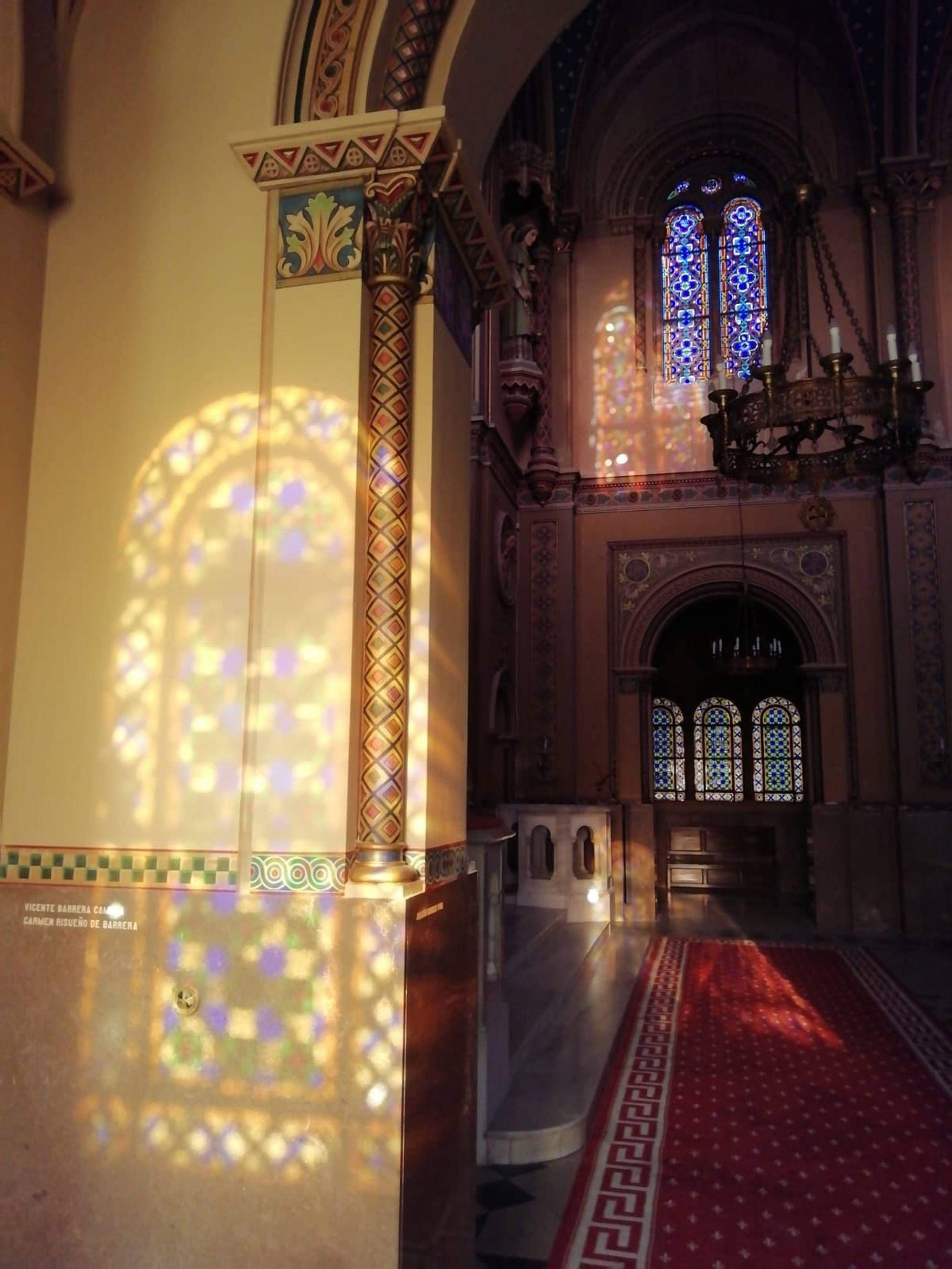
The ways in which the architecture of a town is used or seen can vary throughout the day. From transport hubs which are busy during morning commutes to clusters of restaurants which come to life in the evenings, exploring places at different times than usual can be an interesting way to experience the buildings of a town. Some important structures may also be specially lit after dark, and night-time architecture walks could be used to observe the atmosphere created and the ways in which these illuminations highlight their architectural features. The importance of light could also be demonstrated by focussing on stained glass, looking at the vibrancy of colours when viewed from the outside after dark, while indoor tours could showcase the changing patterns created by sunlight throughout the day, such as in The Geometry of Light European Heritage Days Story which hosted open days and visits for public to learn about the art and science of the work to restore the stained glass of a church undergoing restoration in Spain.
Use technology to create visual and audio experiences
Technology can offer helpful and innovative ways to provide new perspectives about familiar places. For example, virtual or augmented reality could allow visitors to visualise buildings which no longer exist or show how places might look in the future. Tours of buildings could also explain the evolution of architectural styles by using this kind of tool to show visitors how spaces appeared through different time periods. Other events might look to crowd-source information about local buildings, perhaps through a web-platform for the public to send their photographs and memories about places which could be used for a online exhibition. This data could also be used to feed into the creation of an interactive digital map to encourage self-guided tours for visitors to learn about the history, architecture and stories of buildings, while audio-guides could provide engaging commentary from historians, architects and residents.
Go above and below street level
Architectural heritage can be found not only at street level, but below the ground too. Through tours and talks, the subterranean history of travel networks and infrastructure can be explored, as well as underground structures built to create shelter or hiding places. Some places may even have whole buildings below ground, as shown by The Shoebox Experience, a European Heritage Days Story from England which takes visitors on a tour of a buried 15th century street in the medieval town of Norwich. Other events could focus on looking up to the architectural features of the upper floors of buildings above eye-line which might otherwise be missed. If possible, rooftop tours could also prove popular, providing great views of a city as well as a different perspective of its skyline.
Visualise buildings as they appeared in the past
Exploring the evolution of the built environment is an interesting angle for this year’s events. Delving into the archives of museums, libraries and city halls could bring to light the original architectural drawings of historic places to help communities understand the origins and development of significant buildings in their town, perhaps through an exhibition or guided tour. While existing buildings are a great venue to look around, another option for themed events is to focus on places from the past which are no longer here. This might mean a display of photography or drawings of historic buildings which have been demolished or are in ruins or which show plans which were never realised. Derelict or abandoned buildings might also form the basis for maps or discussions about how to bring them back to life and get people thinking more about the potential of the Architectural Heritage of their town.
There are many ways to use this year’s theme to engage the public with their Architectural Heritage. More ideas for creative and interactive interpretations can be found in the article 5 Ways to Approach This Year’s Heritage and Architecture Theme, as well as the European Heritage Days 2025 Brochure.
